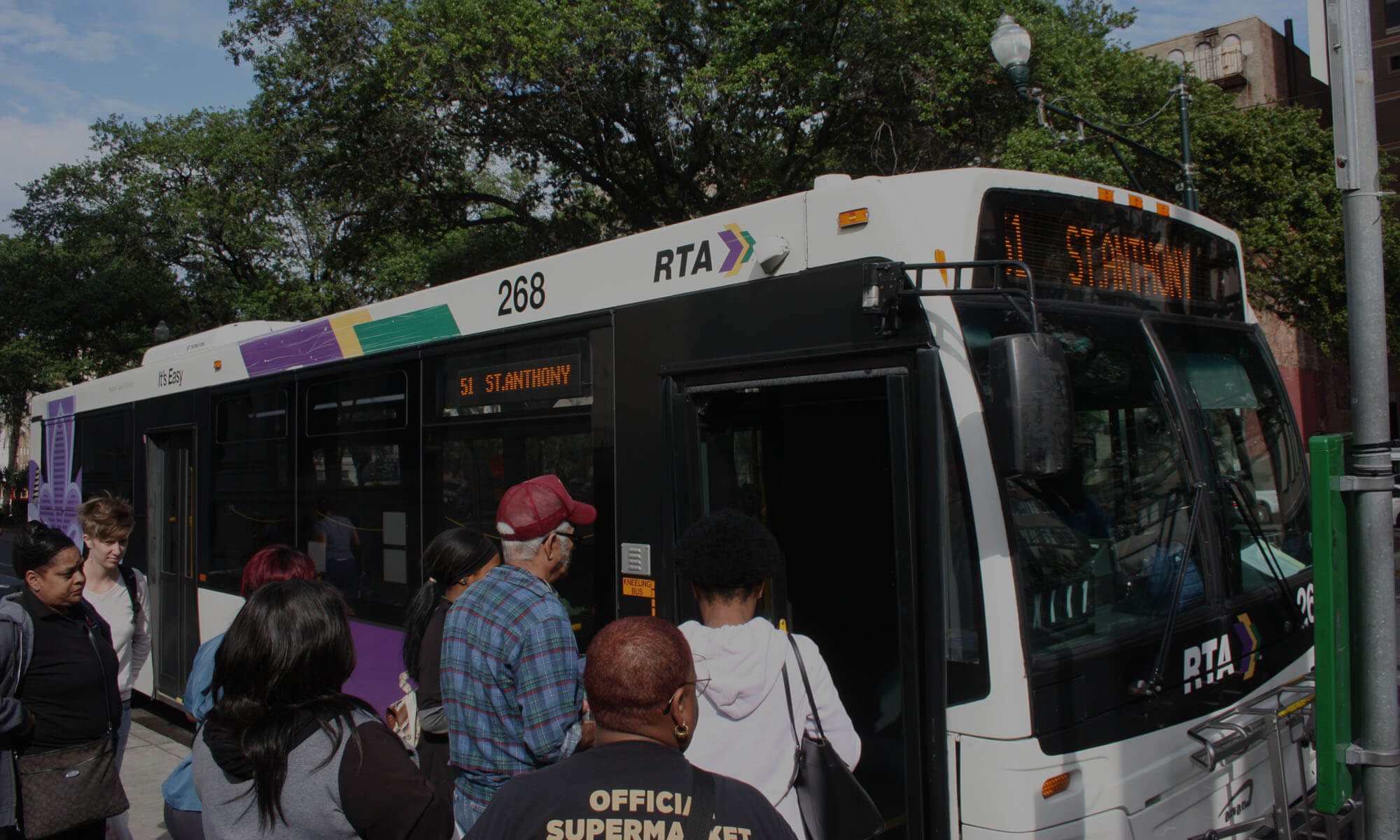RIDE note: One of the best secondary parts of the New Links plan is the “125 percent scenario” – recommendations for service enhancements with an assumption of a 25 percent increase in regional transit operations funding. These are additions that won’t happen immediately but can be a guiding light for rallying the region to deepen investment in transit. We asked the New Links team to explain a little more about this scenario. Their answers are below.
1. Why did the New Links team think it was necessary to do a 125 percent scenario?
The 125 percent scenario in New Links was a component of a larger “Resilience and Priority” Plan that was included in the final New Links recommendations, which included versions of the New Links network at four different funding levels featuring 60, 80, 100, and 125% of the operating budget of the current system.
The original purpose of New Links was to develop a plan that could be implemented using the existing operating budgets of the RTA and JeT, with the goal of providing the agencies with recommendations they could put into action very quickly without depending on additional resources. The Resilience and Priority Plan was developed during a period when the funding environment for transit was very uncertain, and we recognized that there was a very real chance that the pandemic would result in long-term changes to the RTA and JeT operating budgets. We understood that to be useful, the New Links recommendations needed to be adaptable, so the Resilience Plan was intended to provide guidance to the RTA and JeT for implementing the plan in a range of different funding scenarios.
On one end, that meant creating a blueprint for maintaining core service and causing the least harm possible in a scenario where cuts to service continued in the long-term as a result of Covid. However, we also wanted to provide a template to grow, expand and improve the system. The 125 percent plan represents an ambitious but potentially achievable vision for what the regional transit system could look like 5 years from now with additional funding.
2. What are the highlights of the New Links 125 percent scenario?
The 125 percent plan is built around the same priorities as the core plan to create frequent, all-day routes; connect the entire region; and serve residents who need transit the most. Major highlights include:
- A bigger, more frequent “high-frequency” network: the 39 Tulane, 94-Broad, 88-St. Claude and 114-General de Gaulle bus lines would run at least every 10 minutes throughout the day on weekdays, along with the Canal and St. Charles Streetcars.
- Many other lines would run every 15 minutes on weekdays, including the New Orleans East express routes, 27-Louisiana, 55-Elysian Fields, and E1-Veterans lines. About 60% of jobs in Orleans, Jefferson and St. Bernard parishes would be within a half-mile walk of 15 minute transit services (compared to 43% in the baseline New Links plan and 30% in the current system)
- There would be more service on local, neighborhood routes serving Algiers, the 9thWard, and New Orleans East. Most neighborhood circulator routes would run at least every 30 minutes on weekdays.
- The plan also adds a few bus lines that are not included in the core New Links plan, including a shuttle connecting New Orleans East and Chalmette.
3. How much of the operations enhancement would fall on RTA, how much would fall on Jefferson Transit?
It would split the enhancements between the agencies in proportion to their baseline budgets. The RTA and JeT would each operate about 125 percent of their current service.
4. Is the New Links 125 percent scenario ready to go or would significant additional planning work be needed before implementation?
From a route planning perspective, no, since the 125 percent plan mostly uses the same routes and stop spacing in the main New Links recommendations. For the most part, implementation would involve increasing frequency on the routes included in the 100 percent plan.
The biggest hurdle to implementing the 125 percent plan (aside from the operating budget itself) is that the RTA will need to expand its fleet to do so. The 125 percent plan would require the RTA to have about 35 more buses in peak service on weekdays than the core New Links plan, which would require a significant up-front investment in new vehicles by the RTA prior to implementing the plan.
5. Could the New Links 125 percent scenario work with a potential RTA BRT line from New Orleans East to downtown?
Yes. It’s important to remember that the New Links plan was never meant to be a full fix to every issue facing the current transit system. New Links was meant to be the best possible system we can run with current resources, using existing infrastructure. While we are hopeful that the final recommended network accomplishes that goal, there are many needs for creating high-quality service and that go beyond New Links, including:
- Creating comfortable waiting environments for riders at bus stops;
- Safe, accessible sidewalks and walking connections between transit stops and neighborhood destinations; and
- Prioritizing transit in street design to create the conditions for fast, reliable service
BRT service from New Orleans East to Downtown is consistent with the core New Links focus on fast, frequent service, while taking the next steps beyond New Links by addressing those infrastructure barriers to high-quality service.
6. Do you have anything to add?
The 125 percent scenario would represent about an $18-20 million increase in the RTA’s annual service budget (based on 2021 variable cost rates). While this is a significant amount of money, it would represent (for context) only about 3% of the $652 million general fund spending in the City’s proposed 2022 budget.

